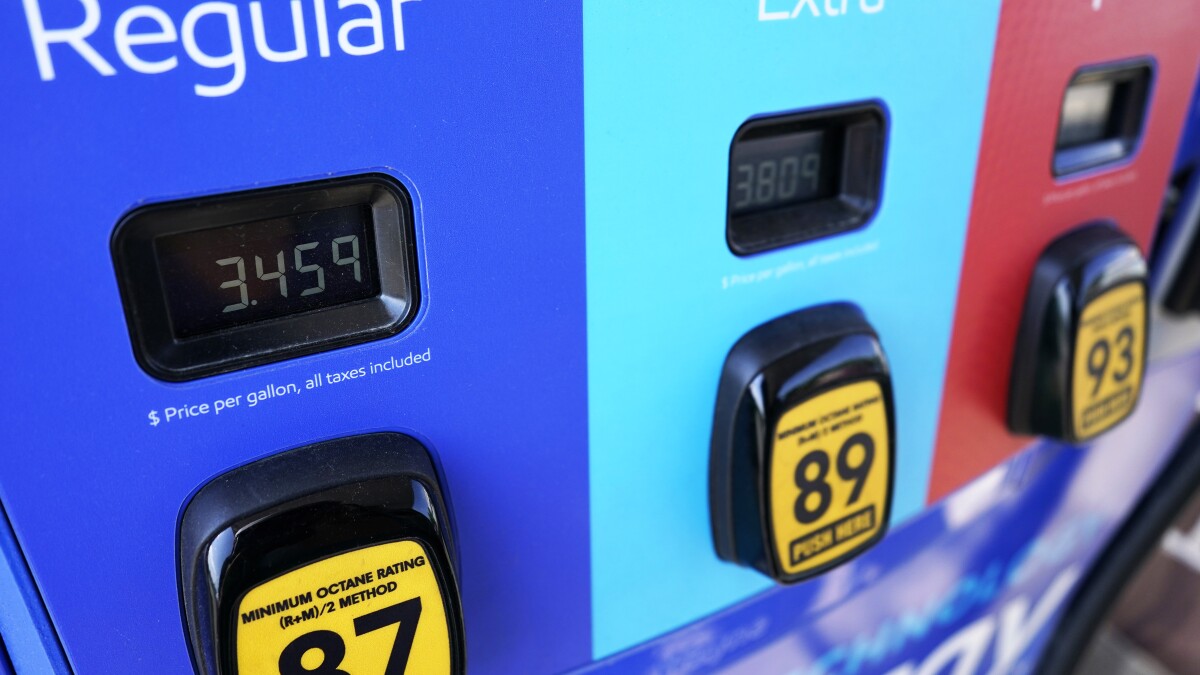The question of why are gas prices rising so quickly continues to create hot topics for the world to discuss and share different opinions. Just because of a seemingly insignificant increase in the price of gasoline, many unpredicted problems have been occurring.
Factories fall into stages of stagnation or faltering due to fuel shortages and high fuel prices. People have to park their cars at the gas station in a long line to wait for their turn to get fuel-filling. People also worry that some of their extra earnings, not one or two days, will be spent to buy gasoline instead of being saved as in previous years. And more severely, this situation also raises the risk of affecting the entire gas system of the Northern Hemisphere in the coming winter.
Contents
The Rising Gas Prices Have Hit A Eight-Year High
If you have followed this price crisis from the beginning, you will probably be less surprised by the raises in the last days of 2021 and early 2022.
The number did reach $80,11/barrel on the WTI price chart and $82.58/barrel for the Brent oil. And recently, even though the average price has dropped slightly to $4.1 per gallon for regular unleaded gas from an intimidating high of $4.3, it is still wandering on a decade roof that shakes everyone in the long term.
The unaverage price of petroleum products in the world 15 days before the petrol and oil price management period on October 11, 2021, is noted as follows. It is $88,156/barrel of RON92, used to make E5RON92 gasoline, a growth of 7.13% compared to the previous period. RON95 gasoline rose to $6,025/barrel while the diesel oil 0.05S rise by $8,269/barrel. The kerosene is up to 8,240 USD/barrel, a 10.33% increase over the last period.
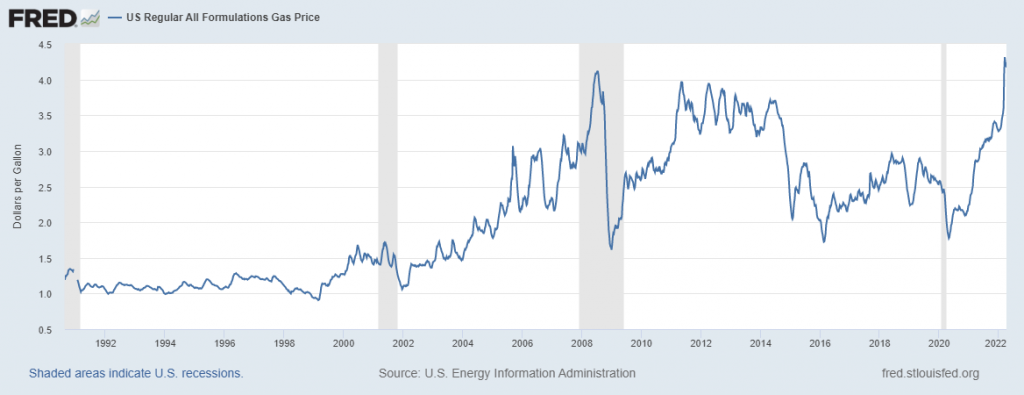
With such fast-paced and somewhat heavy changes in such a short time, some suggest that the current gasoline price crisis is not caused by the covid pandemic but rather by the drop in oil prices over the past few years. Others argue that the reason is the slow and uneven distributed green transition to electric vehicles on a worldwide scale.
Meteorological conditions are also unfavorably worsening the supply and demand problems. Typical extreme climate events include extreme cold in the majority areas of Asia, which has caused the continent’s energy consumption to rise drastically. Meanwhile, drought in many hydro-dependent regions, combined with below-average wind speeds in Northern Europe, has dramatically lowered the renewable energy capacity.
Not only that, the world fuel market has recently been affected by increased demand due to the gradual recovery of the world’s economies, and production and business activities are recovering. Many countries have equally recovered and chosen to live and adapt to the Covid-19 epidemic.
However, whatever the reasons, the recent gas price crisis has had an impact on the geopolitical and strategic issues of major countries. And especially, the most concerned one, the citizens’ life on all continents. In the end, these issues need a lot of analysis from experts to clarify.
By now, we will only take a closer look at the issue cover to help you with a basic understanding of the current gas prices situation. So let’s cross a finger and hope it will not suck our blood any longer. We have also gone over a few generalized reasons above. Here are three easy-to-realize causes of prices of gas going up with detailed explanations to help you understand to aid the problem better in just a moment.
Gasoline demand increased sharply again as people began to fill the streets
Along with all other aspects of life, the timing of the covid pandemic has significantly changed the way Americans travel. The affected factors are the isolation, the order to close the region, and the country lasted long. The uncontrollable early spread of the disease virus, the fear of healthy people getting sick. Working from home has resulted in travel cancellations and a significant reduction in commutes.
However, by the summer of 2021, the Americans were back. Vehicle levels measured by the Federal Highway Administration dropped sharply in the spring of 2020. But over the past few months, highway traffic rates have returned to mid-season levels.
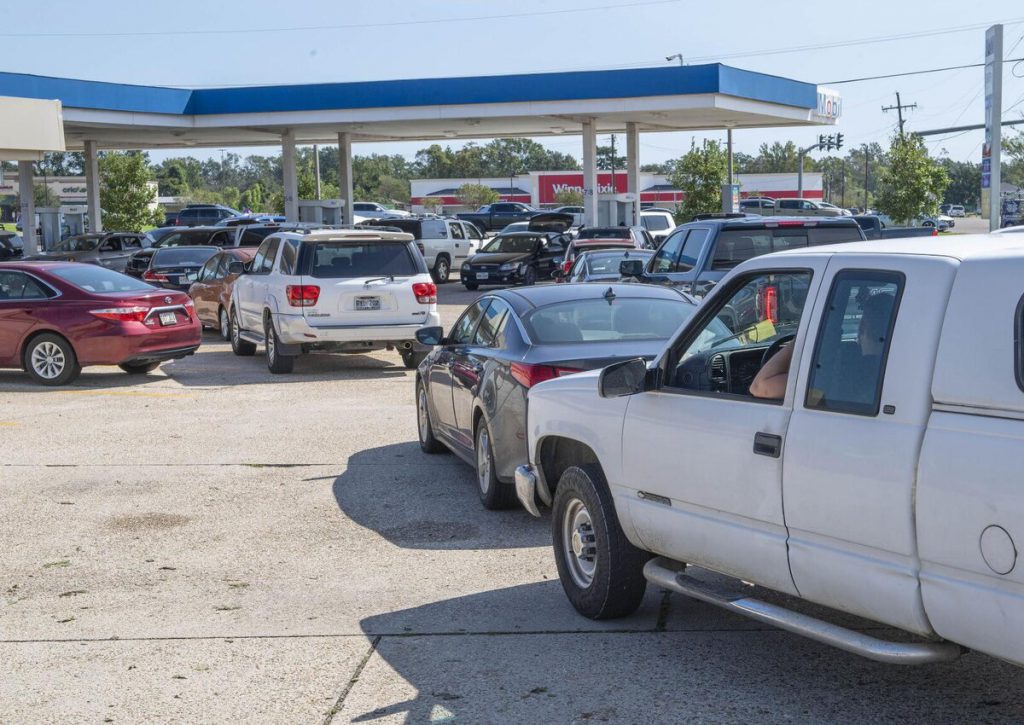
The pace of US oil production and refining cannot keep up
Besides the increase in demand, there are also some supply constraints. In September 2021, the Energy Information Administration announced a report that in late August, Hurricane Ida did uncontrollable shut down a large chunk of the US drilling and refining capacity in the Gulf of Mexico.
While oil rigs and refineries have quickly continued the operations after the accidents were controlled, crude oil stockpiles remained pretty low, suggesting a horrible steady supply shortage.
The EIA (Electronic Industries Alliance) stated at the end of September, the amount of oil stored at Cushing, Oklahoma, one of the primary crude oil storage facilities in the US, was down 40% compared to the first period of the year. Other EIA data showed crude inventories across the country also stayed low, urging an alarming concern for the full-speed supplying processes.
Reduced domestic oil supplies and inventories coupled with increased demand. All led to more intense demand and rising gas prices. And in the middle of one crisis layered with many others, nothing would benefit us, the consumers.
Energy markets around the world are struggling
Aside from the slowing domestic oil supplies, the overseas oil and energy markets did not help with the supply issue either. OPEC (The Organization of the Petroleum Exporting Countries) and other primary oil-exporting nations have repeatedly agreed to only modestly increase production, despite oil-consuming countries such as the US and India promoting high export rates, according to CNBC.
The broader energy markets are also facing supply shortages. Electricity and natural gas prices in Europe have skyrocketed, and traders expect oil and other energy prices to be higher for months to come. In addition, Russia, a key supplier of natural gas to the EU, has limited its deliveries to the West, keeping prices volatile and high. Coupled with that is the surging demand from the US reopening with dwindling supply both domestically and globally. It is no surprise that gas prices are skyrocketing.
When Will The Energy Prices Rise Stop and Be Stabilized?
Gas prices will not drop any time soon. Energy Intelligence Agency research director Abhi Rajendran predicts gasoline prices could fall in the third quarter of the year if there is some roadmap to resolving the Russia/Ukraine situation, plus the Iran nuclear deal.
“The other factor that could lower the prices is if the world falls into a recession that drags oil prices down,” said Rajendran. But to lower gas prices, more supply is needed to meet demand, which is unlikely to happen in 2022 and more likely in 2023. However, the changes will not be that big either, as the only way to mitigate gas prices and climate change is to reduce dependence on oil and gas, not increase supply. And recent research from an expert also suggests that we need to reduce production as soon as possible.
Over the next few weeks, gas prices are likely to stay still or slightly higher. We do not know if they could reach the national average of $4.50 per gallon in the coming months. But whatever the situation may turn out, be prepared to face more gas price chances and problems that can arise at any time soon this year.
Ways To Save on Gas When Gas Prices Are Rising
Now is a better time than ever to adjust your driving habits and find ways to maximize gas mileage to cut your wallet. Here are some ways to save money on gas right now.
Regular car maintenance
After a period of use, cars will cause the fuel filter or air conditioner filter to become dirty, leading to blockage. The braking system may then be locked, and the steering wheel is deflected, which will increase friction on the road, causing the vehicle to consume more gas to provide power for the operating engine.
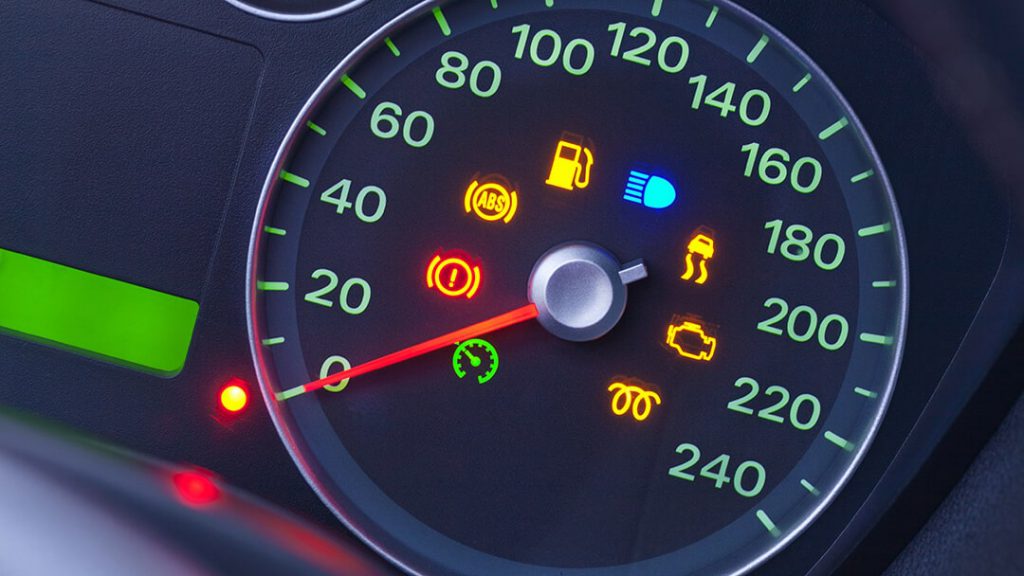
If you see the lights flashing, maybe the car is having problems. When facing the situation, you should immediately bring your vehicle to the garage or service station of a car brand to check and fix it. If you do it in the meantime, you can avoid damage that causes economic problems. And you will help the car operate stably and save fuel more effectively.
>> See more: Maintenance Tips for Idling Cars
Make sure your tires are properly inflated
You should not confuse the notions between the tire inflation parameters recommended by the manufacturer with the maximum pressure recorded on the tire sidewall.
The ability to save fuel in cars can be reduced by 0.4% due to underinflated tires with just only 1 PSI. Therefore, the condition of your tires being too flat will cause the vehicle to use a lot more gas. Another note is that the driver should inflate the tires to the correct parameters recommended by the manufacturer.
Refuel as recommended by the manufacturer
Many people still have a habit of pouring unoriginated gasoline at low prices, especially some drivers who run transportation services, thinking that they will save some good money for a thing that is not relatively important as gas.
However, gasoline prices are at record highs. The higher the octane gasoline, the more expensive. For example, RON (Research Octane Number) 92 gasoline has an octane rating of 92, and you can see how its prices shake. The same go for RON 95. If your car requires 95 gasoline or higher, do not fill it with 92 gasoline. Technically, octane is a hydrocarbon with antiknock properties. This compound in gasoline is considered a measure of resistance to explosion before spark plugs ignite.
Adding gasoline that is not as recommended by the manufacturer will cause engine parts to fail quickly and consume more fuel. Because, for gasoline engines, when the cylinder pressure is not prominent enough during the piston compression, car fuel will burst earlier while the piston is still moving up. It is called the self-explosion phenomenon. As happening for a long time, it can create a piston hole.
To limit this problem, you should always get the gasoline with a higher octane number to ensure a lesser self-explosion situation. Pay more attention to the safety of your car engine when operating and limit excess fuel in the combustion chamber by using a suitable and qualified gas type.
Get rid of excessive items
When the vehicle is under a heavier load, it is no doubt that it will consume more fuel. Therefore, drivers should remove unnecessary items or unrelated equipment from the car to save fuel significantly, especially when being on long journeys.
Do not let the revs go too low or too high
Engine rpm is the number of revolutions of the engine in one minute. The driver can identify it on the dashboard. Next to the speedometer, there will be a rev counter, expressed as a unit number usually less than 10.
Low rpm means slow speed and high rpm means fast speed. The engine then will have to work harder. Maintaining a stable rpm will help save your car fuel significantly. However, letting the engine operate at too low rpm often does more harm than good. The most suitable and optimal speed for a healthy engine and gas mileage is usually above 1,000 to about 2,000 rpm.
Do not turn off the engine when stopping for a short time
Restarting the car engine after just a few minutes causes more fuel consumption. Currently, many modern cars are equipped with the Start/Stop technology. So the driver does not need to completely disconnect the engine when the vehicle stops for a moment. Take advantage of the new features to save gas and experience better riding performances.
Keep the gas pedal evenly when driving
This is the problem that should be noticed more when it comes to saving gas. You should gently access the gas and keep the throttle evenly when traveling, especially on the highway. So that the engine rpm does not have to operate suddenly to carry the big load, which will encourage significant fuel savings and ensure your safety.
Get rid of roof racks or boxes
Many car owners preferred additional roof racks or storage boxes on the roof to carry more luggage with convenience. However, this act usually causes the engine to consume more gas when operating as a roof will bring a lot of wind resistance. Therefore, even if you like it or not, you should remove these accessories when they are not totally needed and used regularly.
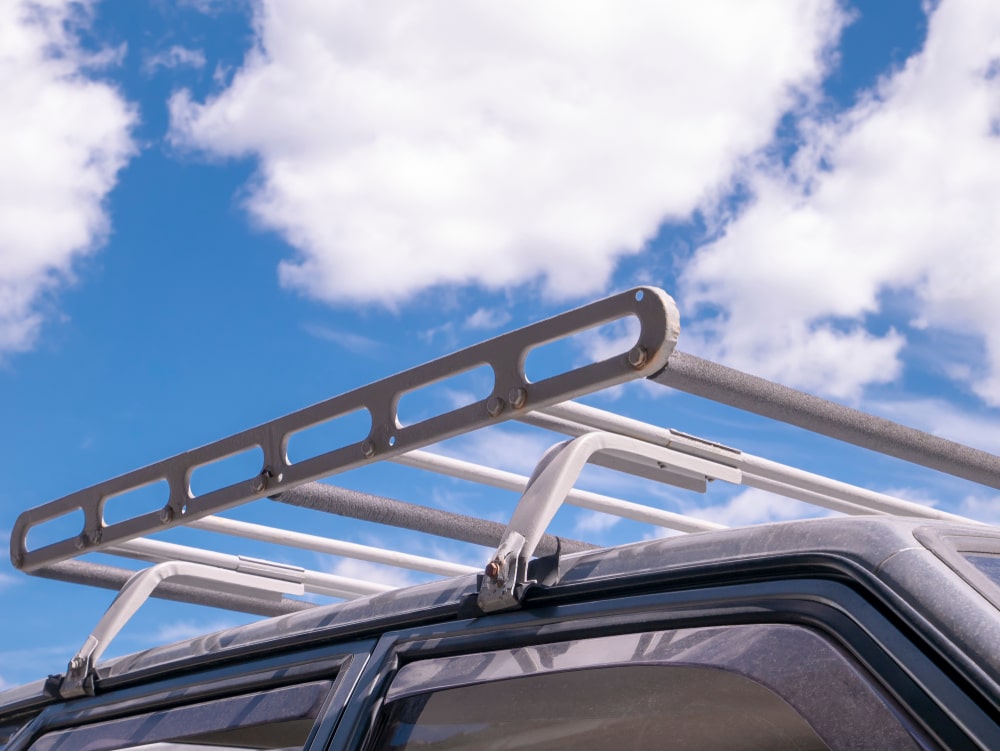
Turn off the air conditioner
Many people are used to turning on the air conditioner during their ride, but this “comforting” device may be one of the factors that contribute to the most significant fuel consumption. Therefore, if possible, you should turn off the air conditioner when the weather is not too hot or too cold. Instead, you can use the fan feature of the system without the need for full air cooling or heating.
Clean the air filter regularly
A clogged air filter in your car will waste a lot of fuel without your notice. If the filter is blocked many times, it is advisable to replace it with a new one to ensure the smooth air filtration process and help the car save more fuel.
Why Are Gas Prices Rising: Conclusion
If you want to save money on gas, start by changing the way you drive. Avoid rapid acceleration or sudden braking, do not rest too long, and turn off all equipment before turning off the engine. Plus, plan detailed trips to get the best out of your car performance anywhere you go. And use apps to see the location of gas stations with the lowest prices within your area. Take advantage of these rewarding agendas and, if possible, try cycling or walking
If you think inflation is on the rise, then fuel rates are as bad now as they were in 2008, 2012, 2014, and even in the early 1980s. But eventually, they always get back to normal. Instead of worrying, think openly and pay attention to using helpful gas-saving tips for cars to overcome the current situation of high gas prices.
Don’t worry too much or always wonder why are gas prices rising so fast right now. Because the price of gas or anything that goes up will have to go down. What matters the most are how long they grow and how quickly you will respond to problems that arise at that time.

